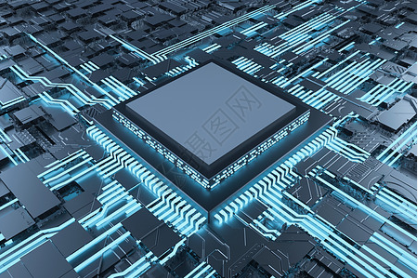As the output switching speed of integrated circuits increases and the density of PCB boards increases, signal integrity (English: Signal integrity, SI) has become one of the issues that must be concerned in high-speed digital PCB design. Factors such as the parameters of the components and the PCB board, the layout of the components on the PCB board, and the wiring of high-speed signals will cause signal integrity problems, resulting in unstable system operation or even no operation at all.
PCB signal integrity issues
Good signal integrity means that the signal can respond with correct timing and voltage level values when needed. Conversely, when the signal cannot respond normally, a signal integrity problem occurs.
Signal integrity problems can cause or directly cause signal distortion, timing errors, incorrect data, address and control lines, and system malfunctions, or even system crashes.

PCB signal integrity problems mainly include signal reflection, crosstalk, signal delay, and timing errors.
1. Reflection
When the signal is transmitted on the transmission line, when the characteristic impedance of the transmission line on the high-speed PCB does not match the source impedance or load impedance of the signal, the signal will be reflected, causing the signal waveform to overshoot, undershoot and the resulting ringing phenomenon .
Overshoot (Overs hoot) refers to the first peak (or valley) of a signal transition, which is the effect of extra voltage above the power level or below the reference ground level;
Undershoot (Unders hoot) refers to the next valley (or peak) of the signal transition. Excessive overshoot voltage often impacts for a long time to cause damage to the device, undershoot reduces the noise margin, and ringing increases the time required for signal stabilization, thereby affecting system timing.
2. Crosstalk
In PCB, crosstalk refers to the undesirable noise interference caused by electromagnetic energy to adjacent transmission lines through mutual capacitance and mutual inductance coupling when the signal propagates on the transmission line. It is caused by electromagnetic fields caused by different structures in the same area. Produced by interaction. Mutual capacitance induces coupling current, which is called capacitive crosstalk; and mutual inductance induces coupling voltage, which is called inductive crosstalk. On the PCB, crosstalk is related to trace length, signal line spacing, and the condition of the reference ground plane.
3. Signal delay and timing error
The signal is transmitted on the wires of the PCB at a limited speed, and the signal is sent from the driving end to the receiving end, during which there is a transmission delay. Excessive signal delay or signal delay mismatch may cause timing errors and confusion of logic device functions.
PCB design method to ensure signal integrity
In the PCB design process, if you want to better ensure the signal integrity, you can consider the following aspects.
(1) Considerations in circuit design. Including controlling the number of synchronous switching outputs, controlling the maximum edge rate (dI/dt and dV/dt) of each unit, so as to obtain the lowest and acceptable edge rate; selecting differential signals for high-output functional blocks (such as clock drivers); in the transmission line Passive components (such as resistors, capacitors, etc.) are connected to the upper end to achieve impedance matching between the transmission line and the load.
(2) Minimize the trace length of parallel wiring.
(3) The components should be placed far away from the I/O interconnection interface and other areas susceptible to interference and coupling, and the spacing between components should be minimized.
(4) Shorten the distance between the signal trace and the reference plane.
(5) Reduce trace impedance and signal drive level.
(6) Terminal matching. Terminal matching circuit or matching components can be added.
(7) Avoid wiring parallel to each other, provide sufficient wiring spacing between wiring, and reduce inductive coupling.
Signal integrity is an important concept that cannot be ignored in PCB design. To ensure that the PCB has good signal integrity, engineers need to synthesize a variety of influencing factors, rationally layout and route, and improve product performance.